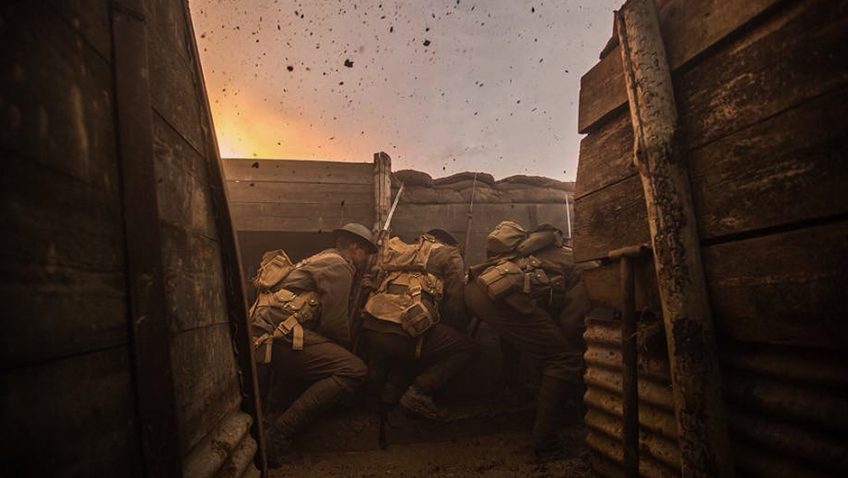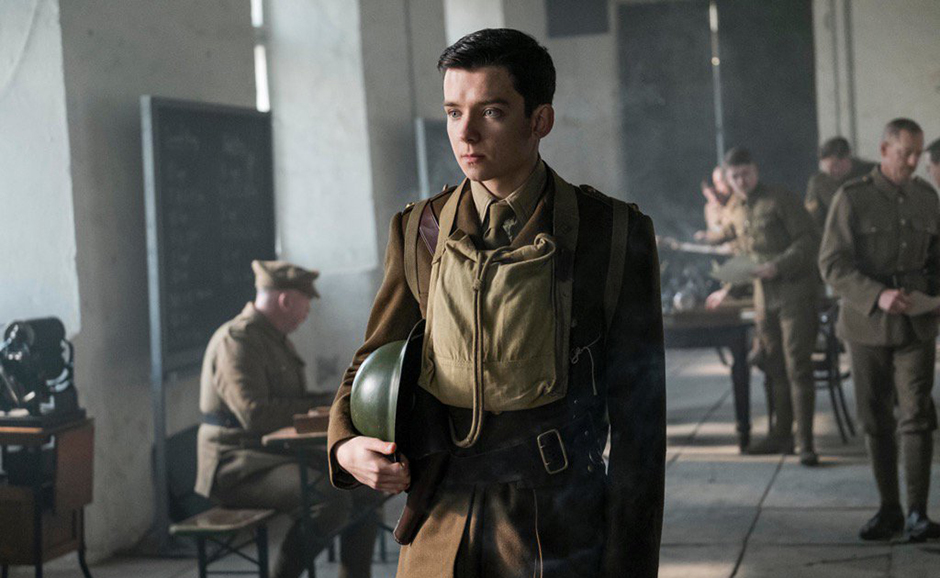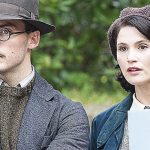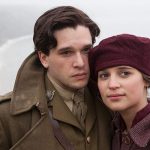Joyce Glasser reviews Journey’s End (February 2, 2018) Cert. 12A, 107 min.
In Bob Dylan’s Nobel Prize for Literature acceptance speech, he cites three literary works that have stayed with him throughout his life and have made their way into his songs. One of them is Erich Maria Remarque’s 1929 war novel, All Quiet on the Western Front. Dylan wrote,’ I put this book down and closed it up. I never wanted to read another war novel again and I never did.’ Had he read or seen R.C. Sherriff’s 1928 play, Journey’s End
he may have felt the same way.
Today, you might, like the managers of West End theatres in 1928, feel that no one wants to see another war play, particularly one with ‘no leading lady’. We read it in school and there have been five screen adaptations alone. But like Remarque’s novel, there is something about Journey’s End that haunts you.
Along with his fellow British directors Joe Wright (Darkest Hour) and Christopher Nolan (Dunkirk) Saul Dibbs (Suite Francaise, The Duchess, Bullet Boy) has taken advantage of the centenary of WWI with his new screen adaptation of Journey’s End
. Written by producer Simon Reade, it turns out to be a convincing, if inevitably stagey, historic drama and a topical reminder of the personal trauma of war.
Dibbs makes good use of Sherriff Aristotelian unities (time, place, action) as the drama unfolds in six tension-filled March days in a trench in Saint Quentin, Northern France. Rumours of an imminent German offensive to end a nerve-wracking deadlock reach high command. Enlisted men are required to spend six days a month at the frontline and British Army C Company’s Captain Stanhope (Sam Claflin) receives orders that his unit will bear the brunt of the offensive.
When Virginia Woolf introduced a shell-shocked husband into her ground-breaking novel Mrs Dalloway, three years before the publication of Journey’s End
it was not a condition recognised outside of the medical establishment. As we see in the film, the generals intentionally overlooked the symptoms because they needed all non-physically wounded men to fight. In Journey’s End
protagonist Captain Stanhope (Sam Claflin) is a popular and respected commander, but the horrors of war and the huge responsibility placed on his young shoulders have shattered his nerves.
Stanhope has managed to stay alive, and keep others alive, for three years, but has become an alcoholic suffering from twitches, outbursts, headaches and insomnia. Ashamed of what he has become, he can’t bear to write to his fiancée.
Stanhope’s fear of being exposed is heightened early on in the film when his future brother-in-law, a naive, idealistic, baby-faced Second Lieutenant Raleigh (Asa Butterfield) manages to pull strings to serve under the man he has idealised since public school days. Stanhope had casually told Raleigh to look him up when he enlisted, never imagining he could, or that the war would last long enough.
But now Raleigh represents one more layer of responsibility; unwanted link to his previous life and a painful reminder of what he has become.
Caflin might still be identified with The Hunger Games, but he widened his range in My Cousin Rachel and is a revelation here. Though he is 10 years older than Laurence Oliver when he appeared in the play’s West End premiere, and probably 10 years older than the character should be, he is always believable and never melodramatic. Caflin is particularly good in the scene in which Stanhope nearly attacks Raleigh to intercept the letter he has written to his sister. Stanhope’s shame is intensified when Lt Osborne (a powerful performance from Paul Bettany) intervenes and reads the letter, full of praise for his commander.
Though there is no ‘action’ in the first hour of the film, there is a constant tension as we learn that the offensive is expected on Thursday, 21st March. During this waiting game we are introduced to the characters who are types, but in this production at least, not clichés. Mason (Toby Jones) provides the film’s only comic relief using British dry humour and wordplay to make the meals he is serving more appetising. Dependable, stoical and good natured Trotter (Stephen Graham) is contrasted with Hibbert (Tom Sturridge), whose cowardly insubordination is well-handled by Stanhope who admits to the clearly shell-shocked officer that he, too, is scared.
If the waiting is bad, Stanhope has to summon all the strength left in him to inform Osborne, his only confidant, that Osborne has been selected to take part in a raid – in broad daylight – to gather intelligence for the high command just before the offensive. We see Stanhope try to persuade his superior to let him go in Osborne’s place but Stanhope is too valuable to risk in this suicidal venture. And, despite Stanhope’s protest, Raleigh is chosen as the second officer.
One of the most potent scenes in the film follows when Osborne, a gentle school teacher, devoted father and courageous gentleman, tries to distract an obviously petrified Raleigh in the minutes leading up to the raid, hiding his own fear.
The lasting power of both All Quiet on the Western Front and Journey’s End
lies in part in their authenticity and lack of sentimentality. For both works were written by men who had lived through what they were writing about. They present us the truth in its gritty reality, with all its miserable detail (we learn that the walls of the trenches stink from the bodies of French soldiers buried in them). But above all, it is the compassion and humanity that emerge from the trenches that have made these works classics, and that permeate Saul Dibbs’s film.
You can watch the film trailer here:






